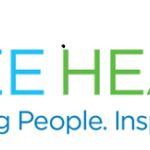 About 18 months ago, ironically on my birthday, Ringling Brothers, and Barnum & Bailey Circus ended their 110-year run since the two circuses merged in 1907. What ended this incredible run? Was it animal rights groups? No. Lack of new starry-eyed kids looking to be entertained? Nope. Fear of clowns? Not that either. What killed the ‘Greatest Show on Earth’ were two key factors: An unexpected competitor who could produce shows for far less cost and an unwillingness for the traditional circus to change. The new competitor cut out all the animal acts, the barking ringmaster, but also brought back the things the Brothers circus had long forgot: Things like the actual tent and live music. They also came up with a cool name, Cirque. Because they focused on acrobats and clowns, were willing to pitch their tent in a parking lot, and limited other overhead, their shows were much less costly. Realize there was no reason the now out-of-date circus could not have done this transformation. They had more resources and experience than anyone but chose not to or waited until it was too late to change. I believe the same thing is coming to patient care and the approach to health care. Someone somewhere is going to finally figure out how to deliver a better, more satisfying product with less cost and bureaucracy. When it happens, most of us will be sitting around like the final Ringling Brothers board meeting saying, “Why didn’t we think of that?” The evolution needs to continue in health care. Gather your teams, seek outside advice, and ask everyone: How can we do it better? How can we deliver healthcare in a new and dramatic way? What are the couple of moves that can change everything? Some have already begun to answer these questions and are quickly making changes to their approach. Others may find themselves the equivalent of a lion tamer, wondering where things went wrong.
About 18 months ago, ironically on my birthday, Ringling Brothers, and Barnum & Bailey Circus ended their 110-year run since the two circuses merged in 1907. What ended this incredible run? Was it animal rights groups? No. Lack of new starry-eyed kids looking to be entertained? Nope. Fear of clowns? Not that either. What killed the ‘Greatest Show on Earth’ were two key factors: An unexpected competitor who could produce shows for far less cost and an unwillingness for the traditional circus to change. The new competitor cut out all the animal acts, the barking ringmaster, but also brought back the things the Brothers circus had long forgot: Things like the actual tent and live music. They also came up with a cool name, Cirque. Because they focused on acrobats and clowns, were willing to pitch their tent in a parking lot, and limited other overhead, their shows were much less costly. Realize there was no reason the now out-of-date circus could not have done this transformation. They had more resources and experience than anyone but chose not to or waited until it was too late to change. I believe the same thing is coming to patient care and the approach to health care. Someone somewhere is going to finally figure out how to deliver a better, more satisfying product with less cost and bureaucracy. When it happens, most of us will be sitting around like the final Ringling Brothers board meeting saying, “Why didn’t we think of that?” The evolution needs to continue in health care. Gather your teams, seek outside advice, and ask everyone: How can we do it better? How can we deliver healthcare in a new and dramatic way? What are the couple of moves that can change everything? Some have already begun to answer these questions and are quickly making changes to their approach. Others may find themselves the equivalent of a lion tamer, wondering where things went wrong.

























